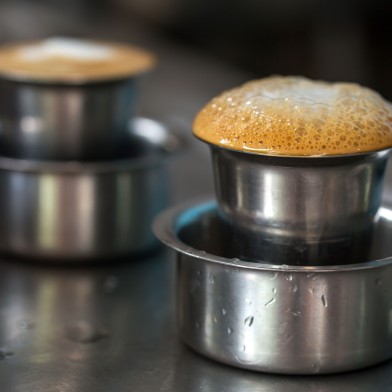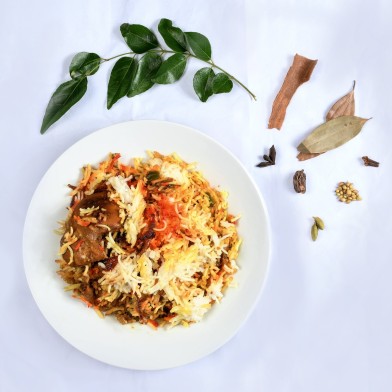Growing up in Aotearoa, most families will be familiar with Maggi’s ‘2 Minute Noodles’. Whether you subscribed to the classic chicken or, slightly controversial, beef flavour, these seemed to be in the pantry of most households when I was growing up.
The concept of having tasty noodles ready within two minutes of placing the packet in the microwave with hot water is very appealing – but also heavily debated with friends. Do you drink the broth or not? Do you add extra flavourings or leave as is?
Growing older for me meant discovering the real range of instant noodles available beyond Maggi – and that sometimes it does taste better cooked in a pot than a microwave.
A sample of the range of instant noodles available from Four Square, Queenstown.
While Maggi was my introduction to the world of noodles, the origins of instant noodles go back much further. First invented in Japan in 1958 by Momofuku Ando of Nissan Foods Ltd, Chicken Ramen was the world’s first instant noodles, colloquially known as “Magic Ramen” since it could be eaten anytime, anywhere just by adding boiling water. This was further popularised in 1971 with Momofuku’s creation of CUPNOODLES, which became an international success.
Since the success of cup noodles, the hype of this scientific innovation mixed to meet convenience needs of a tasty meal has not gone away. According to the World Instant Noodle Association (WINA) more than 100 billion servings are eaten annually across the globe, with New Zealand accounting for 100 million of those in 2022.
While this sounds like a large amount, New Zealand sits at 39th on WINA’s table of over 56 nations. Only two countries in the top ten weren’t in Asia (USA and Brazil), with China/Hong Kong taking out the top spot with 45 billion servings in 2022 (not even their highest consumption year).
It’s not just North Asia – the instant noodle market in India is projected to grow to USD 3.83 billion by 2028, with Nestle’s Maggi noodles sitting as a steadfast household favourite (that’s despite the brand getting briefly banned in 2015).
Cup Noodles Museum in Japan. (Photo – Craig Cooper)
The ranking of which instant noodles are best is subjective, but the reviews are taken very seriously. Whether you look to Buzzfeed, TikTok, or even the New York Times, everyone has a view.
If you’re looking for instant noodles to match types of Asian noodle dishes, Sapporo Ichiban does a good Tonkotsu Ramen while Nongshim Chapaghetti (or Jiapaghetti) resembles black bean noodles Jajangmyeon, a popular staple in Korea. If you’re wanting a tasty snack or meal substitution, Nongshim’s Shin Ramyun is strong (aka: nasal-clearing if you use all the seasoning), but tasty and filling, any Maggi packet is a recipe for success, and if you’re wanting a spicy kick, Samyang Buldak is ‘hot chicken’ flavoured.
(Don’t just listen to me though -The Spinoff has a great Aotearoa specific guide and the Los Angeles Times even did a power ranking.)
Even though Japan was the home country of Cup Noodles, South Korea, Indonesia, India, and Malaysia are also big producers of noodles. One brand that is consistently mentioned within an instant preference debate, and one of world’s largest producers, is Indomie. Launched in Indonesia in 1972, just a year after Cup Noodles, Indomie has risen to be staple in the instant noodle game. Perhaps seen as the more interactive alternative to Maggi with its DIY sauce packet, the global admiration of Indomie cannot be underrated – following the unfortunate passing of Nunuk Nuraini (the creator of the brand’s mi-goreng flavour – yes, just the flavour), numerous tributes were shared on social media thanking her for her work.
The number of brands and flavours available globally and the variety in preference for how we each enjoy our instant noodles is impressive. According to WINA, these preferences of broth level, noodle choice, flavour and spice level can broken down across Asia. Vietnam opts for noodles with elasticity in a broth with a mixture of shrimp and acidic flavours, whereas Indonesia prefers their instant noodles fried or not sitting in broth (similar to the popular Mie Goreng), with vegetable, chicken or shrimp flavouring accompanied by chilli condiments.
A sample of the range of instant noodles available from Chaffers New World, Wellington.
The acceptance of and commitment to instant noodles across Asia is miles ahead of Aotearoa. This could be marked by the Cup Noodle Factory in Japan alone, but across the region, including South Korea and Malaysia, there are many 24hr self-service restaurants with walls stacked up with noodle brands, where customers can come, assemble and eat instant noodles of their choosing. Furthering the debate of “how do you eat your instant noodles?”, these outlets come equipped with bowls, cutlery, hot water dispensers and a variety of components you can add, such as kimchi, seaweed, cheese, spam, sauces, and yes - even an egg at some locations. The concept has also gained traction in the west, with the Instant Noodle Factory opening in Queens, New York in 2023.
Do I wish I had one of these in my neighbourhood? Absolutely. Would a concept like this work in New Zealand? I wish, but I don’t think we’ve got the number of instant noodle enthusiasts to keep it going. I still remember the self-serve yoghurt craze that took over the nation around 10 years ago and how well that’s doing now. I have been impressed with the range of instants available at larger supermarkets and specialty stores, so there is appetite for more than Maggi in little old New Zealand.
I think it’s fair to say that the humble instant noodle has long surpassed just being a cheap, uni meal. Everyone now has their own armchair theory of the best way to cook your instant noodles. Most would follow the instructions on the packet, but if you’re feeling like your instant noodles need something extra, search ‘instant noodles’ plus your chosen brand. You’ll find videos from home and professional chefs showing you how to upgrade your instant noodles.
My preference – Ottogi’s Jin Ramen (easily found in your local supermarket). Thick noodles, big serving, tasty broth that’s got a kick, but not too much to prevent you from finishing the whole thing. A nice addition is adding some spring onions, a soft-boiled egg, or some kimchi if you’ve got it on hand. Can happily recommend!
- Asia Media Centre



